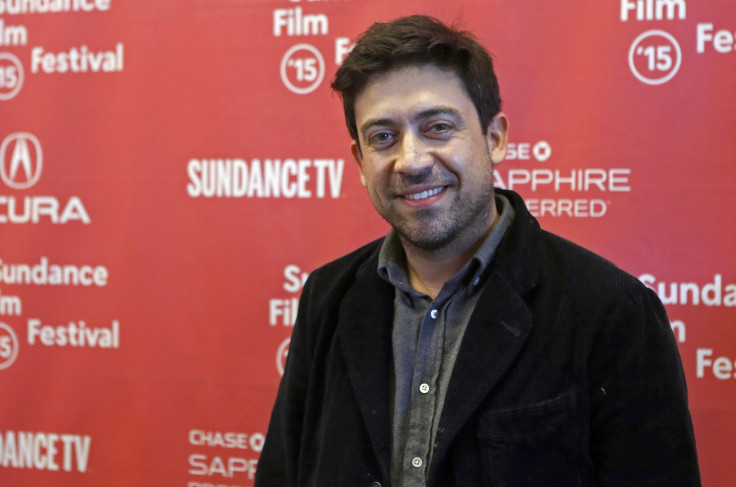Film Festivals Such As Sundance 2015 Are Very Diverse, But Hollywood Is Not

“Diversity is something that moves the ball, and that's something we represent,” Sundance Institute and Film Festival founder Robert Redford told the opening-day crowd at Park City, Utah’s historic Egyptian Theatre. “As change happens, the filmmakers here roll with it, and their films reflect the roles we play and the society we're in.” Indirectly, Redford was addressing the furor over the previous week’s Academy Awards nominations, which lacked any person of color in the acting categories and excluded potential female contenders such as Ava DuVernay and Angelina Jolie from the directors' race.
Redford, through Sundance, has considerably raised the profile of underrepresented filmmakers. About a third of the movies in competition at this year's festival, which concluded Sunday, were directed by women. The festival sponsored a hugely popular panel with Lena Dunham, Mindy Kaling, Kristen Wiig and “Orange Is the New Black” showrunner Jenji Kohan, and made the live stream available to all. Festival programmers chose Jennie Livingston’s “Paris Is Burning,” a 25-year-old documentary on the black and Latino drag ball scene in New York, as its archival screening of the year. There were sponsored events, initiatives, grants, brunches and mixers aimed at female, black, Latino, Asian and Native American filmmakers throughout the 10-day festival.
In comparison, Hollywood's big studios look to be a century behind. If this is the whitest Oscar race since 1998, the year also was not a good one for women; only 7 percent of the top 250 movies were directed by women. Shortly after the Academy Award nominations were announced Jan. 15, the issue went viral with the hashtag #OscarsSoWhite, prompting the Academy of Motion Picture Arts and Sciences' president, Cheryl Boone Isaacs, to respond. "In the last two years, we've made greater strides than we ever have in the past toward becoming a more diverse and inclusive organization through admitting new members and more inclusive classes of members," she said. Despite her claims, Hollywood seems to be regressing when it comes to diversity.
A director cannot sustain a career on film festivals alone, and some festival successes have gone on to bigger things. After scoring with the indie “(500) Days of Summer,” Marc Webb was given the reins to the "Spider-Man" franchise. Colin Trevorrow, after directing the low-budget “Safety Not Guaranteed,” received the green light to bring "Jurassic Park" back to life. But those are multimillion-dollar gambling bets that no studio is taking with women or people of color. Only Ryan Coogler (“Fruitvale Station”) is set to potentially break that barrier with his "Rocky" reboot, starring “Fruitvale” actor Michael B. Jordan and Sylvester Stallone.
For the most part, the output of these filmmakers is infrequent. Just look at recent Sundance favorite Rick Famuyiwa’s (“Dope”) several-year gap between projects. The same goes for Sundance Screenwriters Lab alum Kimberly Peirce, who has made only two features since 1999's Oscar-winning “Boys Don’t Cry.” It’s not enough to win a big festival award or studio internship; employment must follow. Underrepresented filmmakers face a circle of systemic neglect: lack of funding from investors, fewer mentors looking to take them on, studios less likely to take a risk on them and fewer second chances should they produce a flop.
The difference won’t be felt with a token win or two. Kathryn Bigelow’s historic Best Director win for "The Hurt Locker" shouldn’t calcify in a museum, like a rare species we see only once in a lifetime. It’s more than just professional embarrassment that Hollywood displays little diversity. There are economic benefits to being recognized by your peers. The day after Clint Eastwood’s “American Sniper” received six Oscar nominations, the movie opened in theaters nationwide. The well-timed release catapulted the Bradley Cooper-starring drama into the box-office stratosphere past 2014 heavy hitters such as “Transformers: Age of Extinction” and “X-Men: Days of Future Past.” “American Sniper” is currently the fifth-highest-grossing movie of 2014 with $253 million and is within range to pass fourth place's “The Lego Movie.”
The Sundance Film Festival may be fertile ground for diverse film talent, but it’s up to Hollywood to hire those directors, producers, cinematographers and others, not just buy one successful movie and then neglect to invest in that filmmaker’s next project. In the era of international co-productions, the risks are minimized even further than they were before. Yet here we are with "Bachelorette" director Leslye Headland shopping around "Sleeping With Other People," her new movie that no studio wanted to make, and surprised to find that festivals are brimming with diverse talent like Alfonso Gomez-Rejon, director of the festival's Grand Jury Prize winner, "Me and Earl and the Dying Girl."
It would be nice to know this isn’t going to be the last we hear from these filmmakers, Hollywood. The ball is in your court now.
© Copyright IBTimes 2024. All rights reserved.






















